
- About Us
- About 360VR
- Services
- Blog
- Contact Us
With monoscopic VR, 1 image is directed to both eyes, just like a regular image or video. With stereoscopic VR, there are 2 images, 1 for each eye. Stereoscopic VR more closely resembles the way we view the real world.
During filming, stereoscopic VR utilises 2 lenses for each angle as apposed to 1. The 2 lenses represent the human eyes and they capture similar information. The 2 lenses have slightly different angles, just like human eyes. This is known as interpupillary distance (the distance between your pupils) .
By viewing the same scene from 2 different eye positions, the brain can calculate depth. Using the VR Camera to mimic human eye positions, stereoscopic VR creates a sense of 3D depth in 360 videos, with objects appearing nearer or further away.
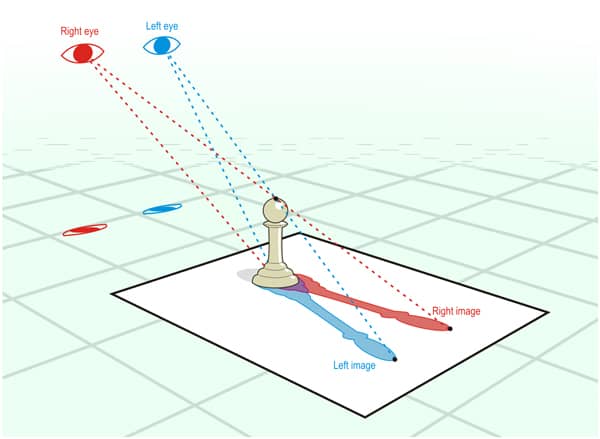
Monoscopic and stereoscopic VR are capable of producing 360 degree content that the viewer is free to explore. Both types of VR can be viewed on a VR headset, but only monoscopic VR can be viewed without a headset.
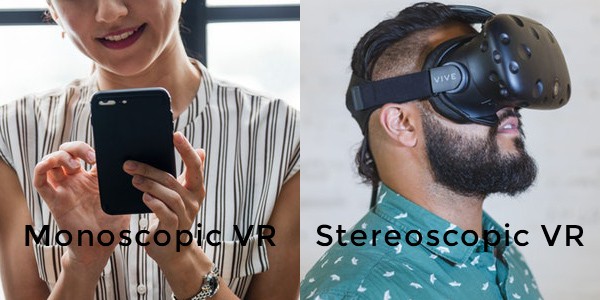
However, due to the depth perception, stereoscopic 360VR generally provides a more realistic and immersive experience. It is typically seen as the preferred choice when producing content for VR headsets.
Having said that, monoscopic VR has a wider range of applications and is commonly used within the industry. High quality 360VR content for VR headsets can also be produced using monoscopic VR.
Monoscopic 360 consists of a single flat image, projected on a sphere around the viewer. Monoscopic VR is great for 360 videos for which a headset is not required, or if the shots contain lots of dynamic movement.
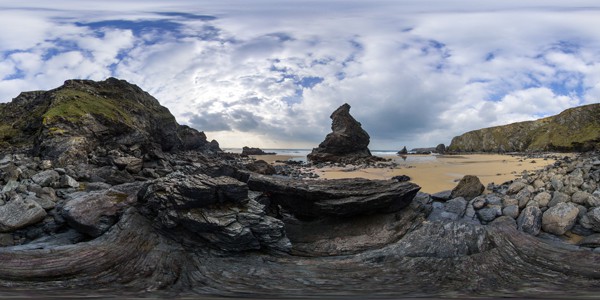
Stereoscopic imagery is often displayed in the Top/Bottom 3D format. The top image is the Left Eye view, the bottom image is the Right Eye view. Stereoscopic productions require more careful planning and execution, to make sure the viewer is comfortable to focus on the story.

Monoscopic 360VR is often seen as the little brother but it is still a powerful medium. What’s more, due to the reduced amount of production required, monoscopic VR is typically more cost-effective than stereoscopic VR.
For tighter budgets, monoscopic VR provides the perfect way to deliver unique experiences without comprimising on quality.
Whilst stereoscopic content requires a VR headset, monoscopic content can be viewed on any device, including mobile. This makes it perfect for promotional content on websites and social media platforms.
Monoscopic VR is great for filming videos that include lots of dynamic movement. Monoscopic 360 video production can be used to comfortably capture shots that contain a lot of movement, whereas getting the movement to feel natural with stereoscopic VR is very difficult. Common examples of videos with dynamic movement include sports and festivals.
Monoscopic VR is also typically the choice for 360 photography, where still images are utilised to create a VR space. The best example of this is in the real estate industry.
High resolution photography cameras are used to produce ultra-sharp images of property interiors and exteriors. In fact, higher resolution images are possible with monoscopic VR as opposed to stereoscopic VR. This is because high resolution DSLR cameras with a specialist rig can be used to capture the 360 photography content.
These images can then be merged together to produce a virtual reality property tour. Users can take a tour of a property from the comfort of their home, on any device they chose. We feel this represents the future for property viewings.

We have also seen the growth of this technique in the hotel industry, where users are able to imagine themselves in the hotel prior to booking.
There is no doubt that stereoscopic VR provides a more immersive and memorable experience. By utilising depth perception, stereoscopic VR often provides the user with a feeling of “being there”.
Being able to create uniquely immersive content allows companies and brands to stand out from the crowd. Stereoscopic VR produces realistic experiences that are hard to forget.
Whilst a VR headset is required to view the content, we are seeing a constant increase in the number of people purchasing VR headsets.
Technological advances, wider support, increased public awareness, and a continual decrease in prices have all contributed to the growth in VR headsets.
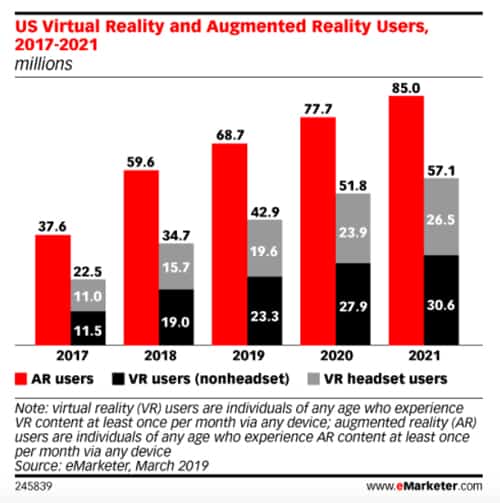
All the internet giants, including Facebook, Google, YouTube, and Amazon have been investing heavily in VR in recent years. We can only see VR continuing to grow for the foreseeable future.
Just as with any technology such as televisions and gaming consoles, users want the best quality and performance. Stereoscopic VR is at the cutting edge and we can see a bright future for it going forward.
By adopting stereoscopic VR, brands can position themselves at the forefront of the VR movement.
View these videos through your YouTube app and VR headset to see the difference.
With any VR, if the content is not produced with care and precision, it will feel disorientating and clunky. This is especially true of stereoscopic VR. Because it utilises 2 lenses for each angle as opposed to 1, any flaws are magnified. For this reason, stereoscopic VR is much more difficult to produce.
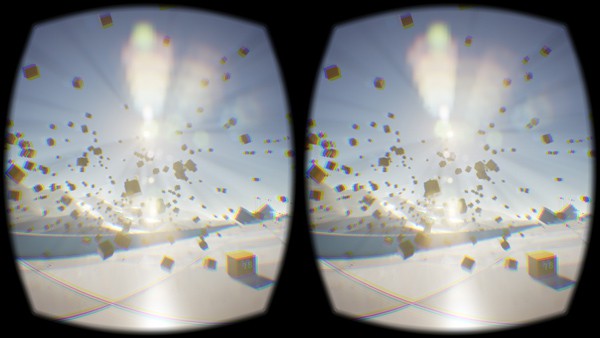
One of the problems that particularly affects stereoscopic VR is the parallax effect. This is where objects move at different speeds relative to the motion of the camera. Because of the number of different lenses involved in stereoscopic filming, this can lead to objects seeming out of place and the users can experience “double vision”.
“The apparent change of an object’s position when looked at from a different angle. Significant parallax effects occur when people or objects are too close to a 360 video camera, making it nearly impossible to get a clean stitch.” – Source
Poor production can also lead to image flaws caused by issues such as lens distortion and chromatic aberration. With monoscopic VR, these issues generally do not cause much of a problem. With stereoscopic VR, more care needs to be taken in both the filming and post production phases.

The post production is typically the most challenging stage of the production process. Proper filming and advanced camera technology eliminates many potential problems. However, the footage then needs to be carefully merged together in a process known as stitching. Expert stitching results in to a seamless, immersive video.
Powerful computer programs help with this process but there is no substitute for attention to detail. Any flaws in the images will take the user out of the scene, resulting in a less immersive experience.
The challenge for VR production companies is to understand and utilise the technologies available to their maximum potential. The technology is constantly evolving, allowing stereoscopic 360 VR content to be produced at a higher quality and more affordable price. However, it is important that filmmakers stay up to date in order to deliver the best value to their clients.
Understanding the limitations of stereoscopic VR allows producers to create great content regardless of the challenges presented. By shooting in a controlled environment, many of the variables can be mitigated.
By using a still camera with the subjects remaining in the same part of the shot, it is possible to avoid crossing over stitching seams. Although somewhat limiting, this method of filming produces some incredible results.
For the right application, stereoscopic VR enables the production of outstanding content that cannot be matched by monoscopic VR.
The best type of VR to produce depends on the specifics of each project. It is impossible to say that one type is better than the other, although there are advantages and disadvantages to each.
Below we have made a table comparing both types of VR:
| Monoscopic VR | Stereoscopic VR |
|---|---|
| Cheaper to produce | More unique & memorable |
| More vesatile | Provides depth perception |
| Higher resolution | More realistic & immersive |
If you are interested in 360 VR and would like some more information please get in touch. We produce both monoscopic and stereoscopic VR for a wide range of applications and budgets.